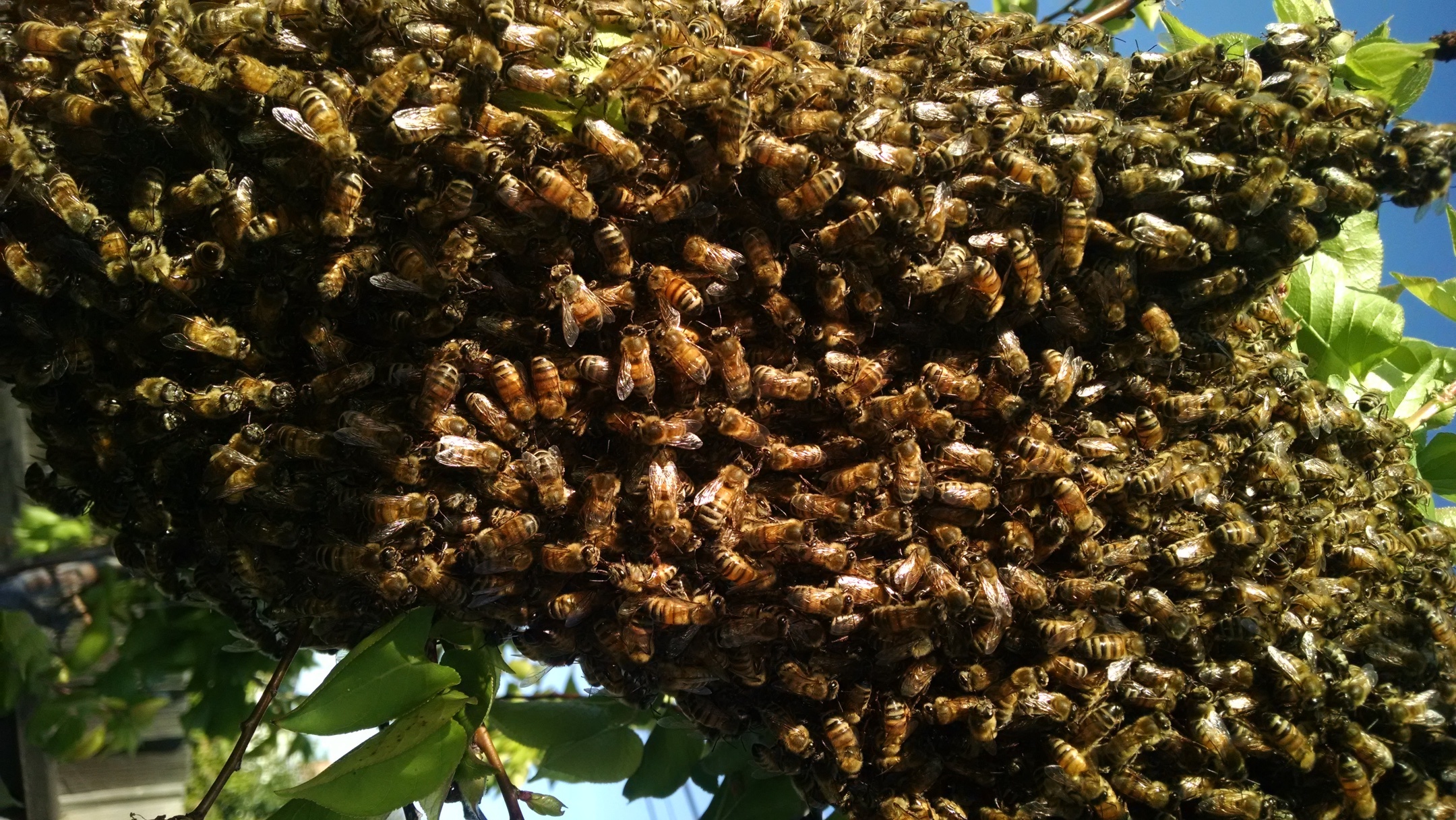 Although a huge, moving, whirl of bees may surprise and alarm you – have no fear. The beautiful, majestic dance taking place in front of you is being performed by our tremendously beneficial honey bees!
Although a huge, moving, whirl of bees may surprise and alarm you – have no fear. The beautiful, majestic dance taking place in front of you is being performed by our tremendously beneficial honey bees!
Most swarming activity takes place from April through May. Bees don’t swarm during the rain, so this year we will most likely see the timeframe pushed back a few weeks.
Honey bees, Apis mellifera, swarm for one of two reasons. Either the hive has become too crowded so they split into two groups (or more), with one group remaining in the existing hive. Or they abscond. In this case, all bees including the queen abandon the existing hive completely due to lack of food or water, parasite or disease infestation, frequent disturbance by humans and/or animals, weather changes, poor ventilation or problems with the queen.
Western honey bees aren’t nearly as likely to abscond as African honey bees, (a hybrid of South American and European bees known as Africanized honey bees), which tend to swarm more and be a bit more defensive as well.
Worker bees are able to detect when it’s time to swarm due to overcrowding of the hive or the lack of pheromone production from the queen. In preparation for the swarm, the workers will deprive the queen of food in order to slim her down so she can fly. They will also agitate and run her around in order to prevent her from laying many eggs. If they are going to swarm, they will create new queen cells and allow the queen to lay eggs so a new queen can emerge and take over the hive.
Besides making honey, honey bees are essential for pollinating approximately 90 percent of our crops globally. Many of our favorite foods like almonds, most of our cherries, apples, blueberries and other fruit and nut crops wouldn’t exist without these hard-working bees.
According to Deb Conway with GirlzWurk in Saratoga, “Honey bees aren’t usually a problem, as they normally set up their hives in tree cavities, shrubs, light poles, or abandoned buildings. However, they can become a nuisance when they take up residence in the walls of your home, garden shed or in your water meter.”
That’s when it’s time to call someone like Deb who can come and rescue the hive.
Last year was a particularly bad year for honey bees. Some bee keepers reported up to a 90 percent loss in their hives in 2018. Causes for this include varroa mite infestations, increased pathogens due to the warm weather, increased use of pesticides and a decrease in diversity of food sources.
So, what can we do about a swarm? “If you leave the bees alone, they will leave you alone.,” said Dr. Elina L. Niño, honey bee expert at UC Davis. “It only takes a few hours or at most a day or two for them to find and settle into their new home.”
Bees, as well as our other important and beneficial insects, are struggling. Our tendency to develop land and our extensive use of harmful chemicals is wiping out their natural habitat.
The public can truly make a difference by ceasing to use pesticides and by planting an array of beautiful, attractant plants such as ceanothus, lavender, echium, rosemary, penstemon and mint (only recommended in containers because it is so invasive). For more bee-friendly plant ideas, visit the UC Davis Häagen-Dazs Honey Bee Haven website.
Let’s all commit to creating safe and nurturing spaces in our backyards, gardens (and yes, even on those balconies and decks) where our much-needed pollinators and beneficial insects can not only survive, but … thrive!
For help in relocating a swarm or hive or to contact a local bee keeper, visit the Santa Clara Valley Beekeepers Guild’s website, which has information about Santa Clara as well as surrounding counties.
Rebecca Jepsen is a Master Gardener with the Santa Clara County Master Gardener Program of the University of California Cooperative Extension. For more information or to reach Jepsen or other Master Gardeners, visit http://www.mastergardeners.org.

 Being an avid gardener, born and raised in Indiana, I feel incredible blessed to live in sunny California & be able to grow my own food all year-round! I write a monthly garden column for the San Jose Mercury News & am constantly striving for tips & ideas on how to live a little more gently in regards to ourselves, our planet & each other – basically sustainability we can live with! As a
Being an avid gardener, born and raised in Indiana, I feel incredible blessed to live in sunny California & be able to grow my own food all year-round! I write a monthly garden column for the San Jose Mercury News & am constantly striving for tips & ideas on how to live a little more gently in regards to ourselves, our planet & each other – basically sustainability we can live with! As a 



